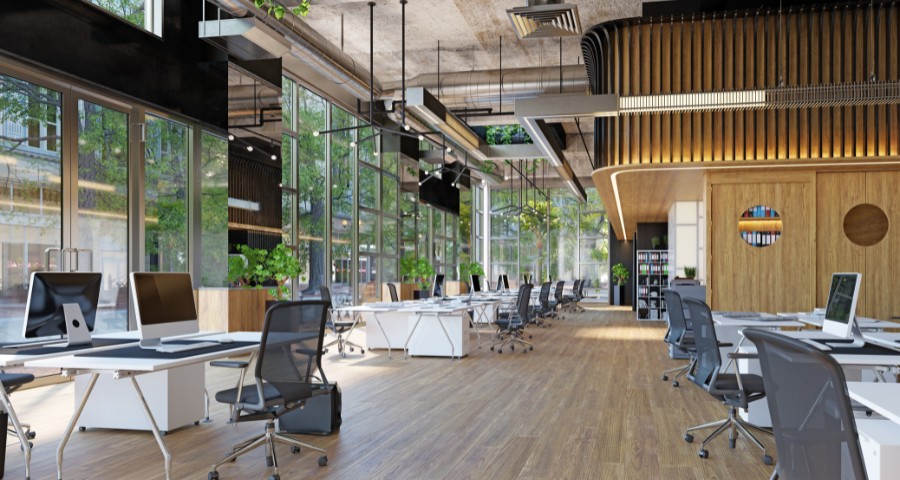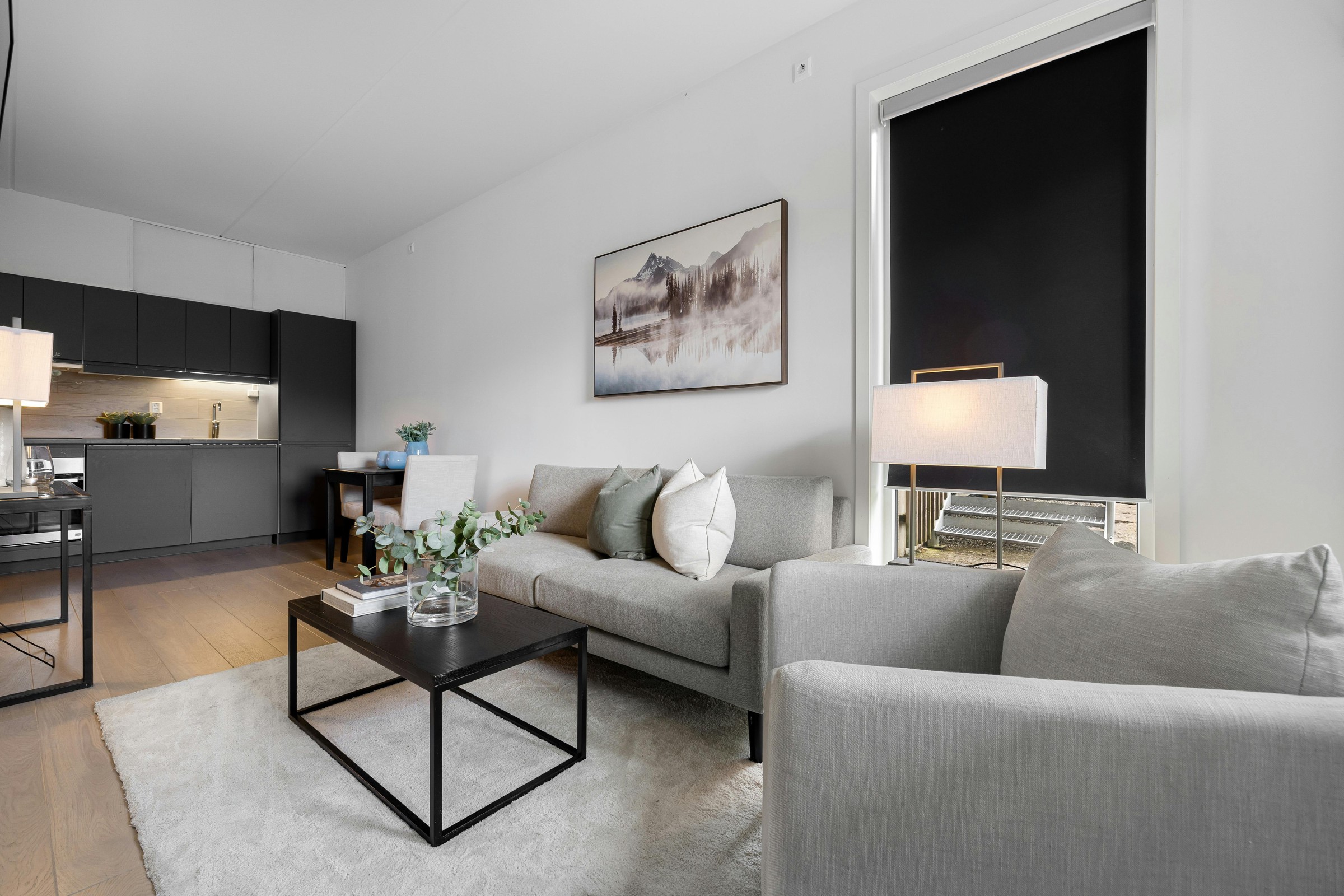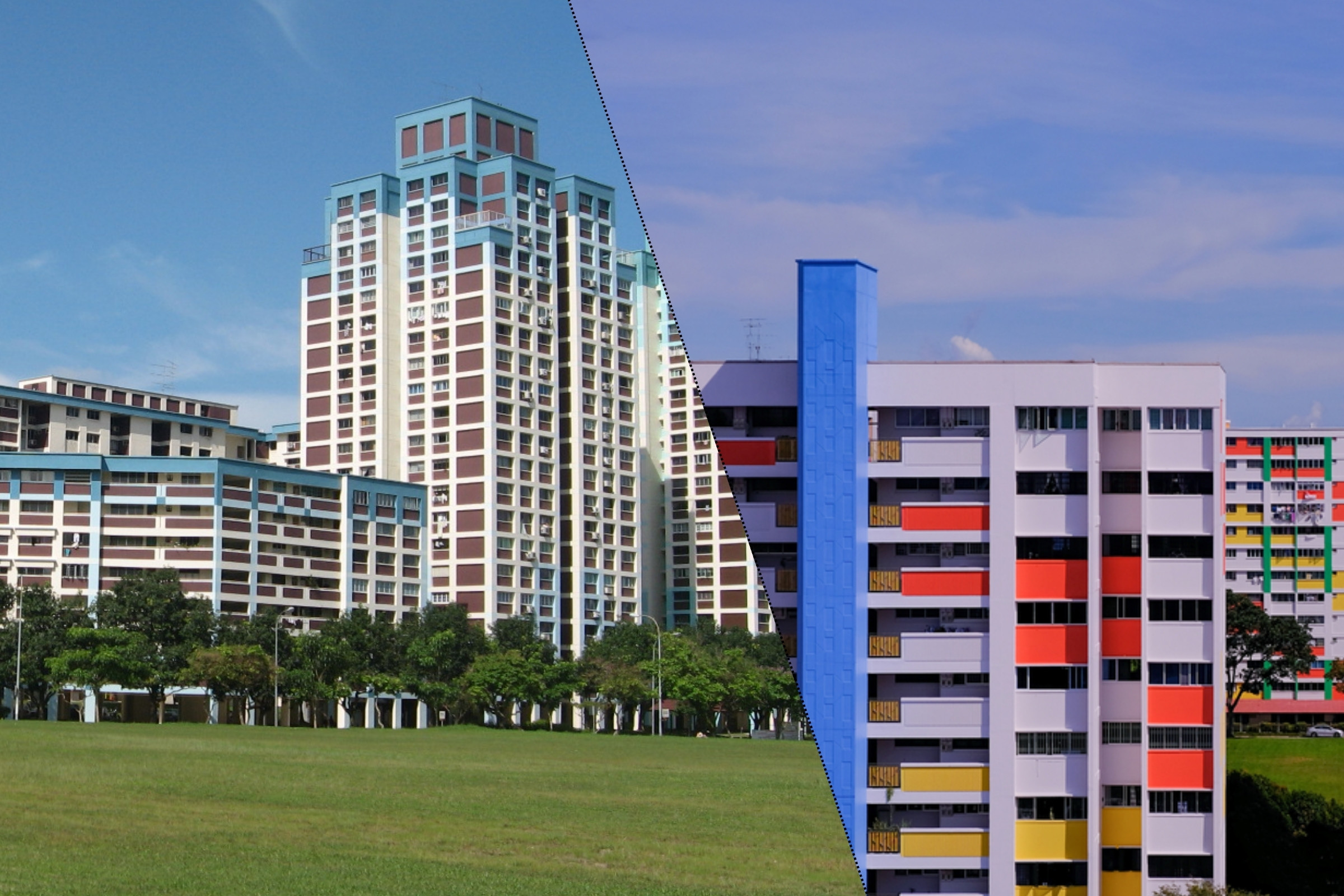Office feng shui is the practice of arranging the workplace so that energy flows harmoniously through the space.
By organising desks, chairs and décor thoughtfully, you can influence how people feel and interact. A well-designed layout can reduce stress and distractions, helping staff concentrate better.
Equally, it can encourage more natural communication and teamwork by providing the right mix of open areas and private zones.
In this article, we explore how applying feng shui principles to an office – particularly the layout – can improve employees’ focus and communication.
Understanding Office Feng Shui
Principles of Feng Shui
Feng Shui (literally “wind-water”) is an ancient Chinese art of spatial arrangement. Its central idea is that the placement of furniture and objects affects the flow of energy (known as Chi) in a space. In an office, a balanced layout promotes “positive Chi” so people feel more alert and at ease.
Clutter and obstacles are seen as blocking the energy, which can cause stagnation and mental fatigue. Conversely, open pathways and orderly spaces allow energy to circulate freely, supporting clarity and well-being.
Feng Shui also uses the “command position” principle: important furniture (like desks) should have a solid wall behind them and a clear view of the door.
This arrangement is said to give a sense of security and control, which can boost confidence and focus.
Feng Shui in the Office
Applying Feng Shui to an office means designing for harmony and productivity. For example, practitioners advise decluttering work areas so that nothing blocks movement or light – in Feng Shui terms, clutter creates “stagnant energy” that clouds the mind.
In practice, a tidy desk and organised storage help people concentrate by removing competing visual stimuli. Likewise, having natural elements (like plants and daylight) is emphasised, because in Feng Shui they symbolise growth and vitality. In fact, studies show access to daylight and views of nature can restore mental energy when we’re distracted.
In short, Feng Shui encourages a clean, well-structured environment so that workers feel calm, alert and ready to engage.
Layout and Focus
Taming Clutter
A chaotic or messy environment can sap concentration. In Feng Shui terms, clutter is “a physical manifestation of mental clutter” and should be avoided.
In practice, an organised desk and office layout means supplies and paperwork are stored away, leaving the workspace clear. This reduces visual distractions so that employees can concentrate on the task, not on a messy surroundings.
Feng Shui reinforces this: it teaches that clear, open walkways allow Chi (energy) to flow, which metaphorically clears the mind for focused work.
Managing Noise and Privacy
Another major factor for focus is acoustic privacy. Open office plans can be visually spacious, but they often introduce noise and interruptions. A noisy office makes it hard for people to settle into deep focus. Interestingly, research also suggests that an office that is too quiet can be unsettling. In practice, this means offices should avoid chaotic chatter and dead silence; some gentle background sound (like soft instrumental music or white noise) can help mask distractions and keep stress low.
Feng Shui would say that distracting noises block mental calm. To follow its advice, offices should include quiet “focus zones” or private rooms where people can work undisturbed. Companies like Google and Facebook create a mix of open collaboration spaces and sound-proofed pods or meeting rooms. This means that layout must balance openness with peaceful nooks. Allowing employees to retreat for concentrated work protects their ability to focus.
In Feng Shui terms, giving people personal space and privacy is like ensuring each individual has the support of a solid “back” to lean on; it helps them feel secure, which in turn boosts concentration.
Desktop Positioning
Where a person’s desk is placed can also affect focus. Feng Shui advises positioning desks so that the occupant faces the room’s entrance, with their back to a solid wall – this is the famous command position.
The idea is that seeing the door gives a sense of control and preparedness (you won’t be surprised by someone entering), while having a wall behind you provides psychological support. According to one Feng Shui expert: “the command position… gives you a sense of control over your environment, helps you stay alert, and prevents feelings of vulnerability”.
Practically speaking, sitting in this orientation can help you stay focused on work instead of wondering what’s behind you. Even if the desk can’t directly face the door, Feng Shui suggests using mirrors or low partitions so you can at least see the entrance indirectly.
This small layout change can reduce anxiety and help maintain concentration.
Layout and Communication
Open vs. Private Layouts
Office layout strongly influences how often people interact.
Many companies have adopted open-plan layouts hoping to spark casual conversation, but evidence suggests the effects can be mixed.
Sometimes, layout can have unintended effects. If openness comes at the expense of quiet and privacy, people may focus on their tasks in solitude and only “connect” via impersonal channels. Indeed, design researchers warn that when an office is too crowded or lacks privacy, it can lead to defensive behaviour and strained relations.
In practical terms, a totally barrier-free office might stifle candid conversation because employees feel exposed or distracted. On the other hand, an environment with no openness can isolate teams.
The key is balance: provide some open areas where teams can easily gather (for informal chats or quick collaboration), but also ensure there are semi-private meeting spaces. Feng Shui supports this balance by emphasising variety in space so that energy can flow but also settle.
Collaboration and Interaction Zones
Good feng shui encourages designing specific zones for team interaction. For example, communal tables, lounges or round meeting rooms let people naturally meet and chat. Feng Shui experts often recommend round or oval tables for gatherings because they promote equality and open communication. In contrast to a rectangular table (which can imply hierarchy), a round or curved table means everyone has equal status, making it psychologically easier to speak up and exchange ideas.
In an office context, using such furniture in break-out areas or conference rooms can subtly encourage team members to interact freely.
Apart from furniture shape, placing whiteboards, bulletin boards or collaborative stations along clear paths can invite chance encounters. For instance, a central coffee station or lounge in the path between work areas can become an impromptu meeting spot.
Feng Shui calls these “energy intersections” where positive exchanges happen. Of course, one must avoid blocking main walkways; corridors should remain uncluttered so people can easily travel and cross paths.
When the layout naturally leads colleagues to bump into each other (rather than staying isolated in boxes), informal communication improves – gossip, brainstorming and quick help are more likely.
Seating Arrangements
Closely related is how individual desks are arranged. Facing or sitting next to each other encourages quick chat, but back-to-back seating can hinder it. Feng Shui prefers orientations that allow eye contact or at least awareness of others’ presence.
Desks shouldn’t face away from each other with no view of the room, as this “walls-off” people. In addition to the command position rule (facing the entrance), Feng Shui suggests sitting offset rather than directly face-to-face, to avoid energy clashes.
For example, colleagues working closely might sit side-by-side or at slight angles so they can notice when someone wants to talk. If desks do face each other (as in a cluster), adding a low plant or open divider can provide some privacy without completely blocking line-of-sight. In short, the goal is an arrangement that feels open enough to invite interaction but not so rigid that it scares people away.
Feng Shui also highlights that maintaining personal space and respect in shared seating prevents tension. For example, placing a small plant or symbol on each desk can create a “personal boundary” that is gentle but real. This respects individual energy (Chi) while still keeping an area social.
Overall, both Feng Shui and workplace research agree: an office should have a mix of shared tables, meeting nooks and private desks. This way, communication is facilitated where it makes sense (common areas and flexible spaces) and quiet focus is protected elsewhere (at assigned desks or cubicles).
Designing a Feng Shui-Friendly Office
Natural Light and Air
Natural elements are cornerstones of Feng Shui. Ensuring that workstations get plenty of daylight and fresh air is highly recommended. Sunlight is linked to higher morale and alertness, and Feng Shui considers it “vitality” for the space.
In practice, try to position desks near windows and keep window blinds open whenever possible. If a section of the office has poor daylight, supplement with full-spectrum lighting to mimic sunlight. Good airflow is also key; Feng Shui warns against “stale air” which equates to stagnant Chi. Simple steps like opening windows or using air purifiers can help keep the energy moving.
These suggestions align with modern research too. Studies find that offices with good daylight and views of nature can help restore concentration even when other distractions exist. For example, views of trees or sky outside the window have a subtle calming effect on the mind.
According to Feng Shui, adding a few indoor plants is doubly beneficial: they improve air quality and they symbolise growth. Plants bring a sense of the outdoors in, which soothes people and can spark conversation.
Overall, designing a space with natural light and air exchange fosters both alertness and a positive mood, which together make focus and communication smoother.
Calming Colours and Decor
The colours and decor in an office also influence energy. According to Feng Shui principles, soft, natural colours create a harmonious atmosphere. For instance, pale blues and greens are said to calm the mind and support focus, while earth tones (beige, light brown) ground the room and make people feel secure. Some Feng Shui guides even advise using accent colours strategically: blue for concentration, green for creativity, and so on. (Of course, paint and furniture choices must still fit the organisation’s brand and aesthetic.)
Beyond colour, artwork and decorations should feel inspiring but not chaotic. Feng Shui suggests keeping only meaningful objects in view – such as a piece of art, a motivational quote, or a few personal items – rather than covering walls with clutter. This kind of décor can be educational or conversational without overwhelming the space. A nice image or a well-chosen art print can also serve as a focal point in a communal area, attracting people to gather or talk about it.
However, one Feng Shui rule is to avoid sharp, aggressive shapes (called “poison arrows”) such as triangular sculptures pointing at someone’s chair, as these can subconsciously create tension. Smooth lines and balanced arrangements tend to promote a more relaxed mindset, indirectly benefiting focus and discussion.
Clear Pathways and Flow
Finally, Feng Shui emphasises unobstructed pathways so that Chi (and people) can circulate freely. In office terms, this means desks and storage units should be arranged with logical walkways between them. One should not have to squeeze or detour awkwardly to reach a co-worker or the exit.
Good flow is also about furniture layout: avoid blocking doors, corridors or common areas with bulky cabinets or random desks. Free movement encourages spontaneous interaction (a quick hello at the printer) and makes it easy to change gear (moving a chair over to a colleague’s desk, for example).
Practical tips include aligning furniture along the edges of a room to open up central space, and using modular pieces that can be reconfigured as needs change. As one Feng Shui teacher advises: keep the middle of the office open and tidy to allow energy to “dance” throughout the area. This also literally opens sightlines, so team members notice each other and can communicate across the office.
In a well-flowing layout, people are not isolated in behind-their-back cubicles but feel part of a continuous, connected environment.
A Balanced, Harmonious Layout
In summary, a Feng Shui-informed office layout provides a balance. It offers both open zones for collaboration and quiet corners for concentration.
It keeps clutter to a minimum and noise to a comfortable level. It places people so they feel secure (backed by a wall, able to see the room) and yet connected (able to see or face others when needed).
And it incorporates elements like light, plants and calming colours to uplift the space. When these principles come together, the result is a workspace where staff feel both relaxed and energised.
Such an environment naturally supports sharp focus on tasks and also friendly, authentic communication between colleagues.
Feng shui isn’t about superstition here; it’s about making your bedroom a retreat. If a layout or item makes you feel uneasy, it’s worth adjusting. Often, the remedy is simple: move a plant, or switch off a gadget, or hang a curtain.
Remember, feng shui at its heart is about harmony with nature. Letting natural elements (light, air, even a touch of plant life) permeate your home helps balance the energy in a very fundamental way.
Final Thoughts

A thoughtful office layout can make a tangible difference to how well people work together and concentrate. Feng Shui provides a useful framework for this by encouraging clear, balanced spaces that reduce distractions and invite positive interaction.
An office that is too cluttered, noisy or poorly arranged will hurt both focus and communication. Conversely, applying Feng Shui tips – such as keeping areas organised, ensuring good sightlines, and blending collaborative zones with quiet areas – can help create a happier, more productive workforce.
By arranging desks in the “command position”, managing sound levels, providing natural light and plants, and choosing soothing colours, you craft an office environment that feels harmonious. In that atmosphere, staff are less stressed and more alert, meaning they can concentrate for longer. At the same time, having open but not chaotic meeting areas and a layout that encourages people to walk over and chat means team communication flows naturally.
In short, good office feng shui – grounded in both ancient wisdom and modern evidence – shows that the right layout really can boost focus and collaboration in the workplace.
Have a question for us?
We welcome any question with no commitments. Master Louis Cheung will seek to clarify any doubts you may have.
“Master Louis Cheung has an approachable and comfortable personality along with competent skills. I can confidently recommend Master Louis Cheung to my friends. Thank you, Feng Shui Master Louis Cheung.”
 James H.
James H.Senior Financial Analyst







